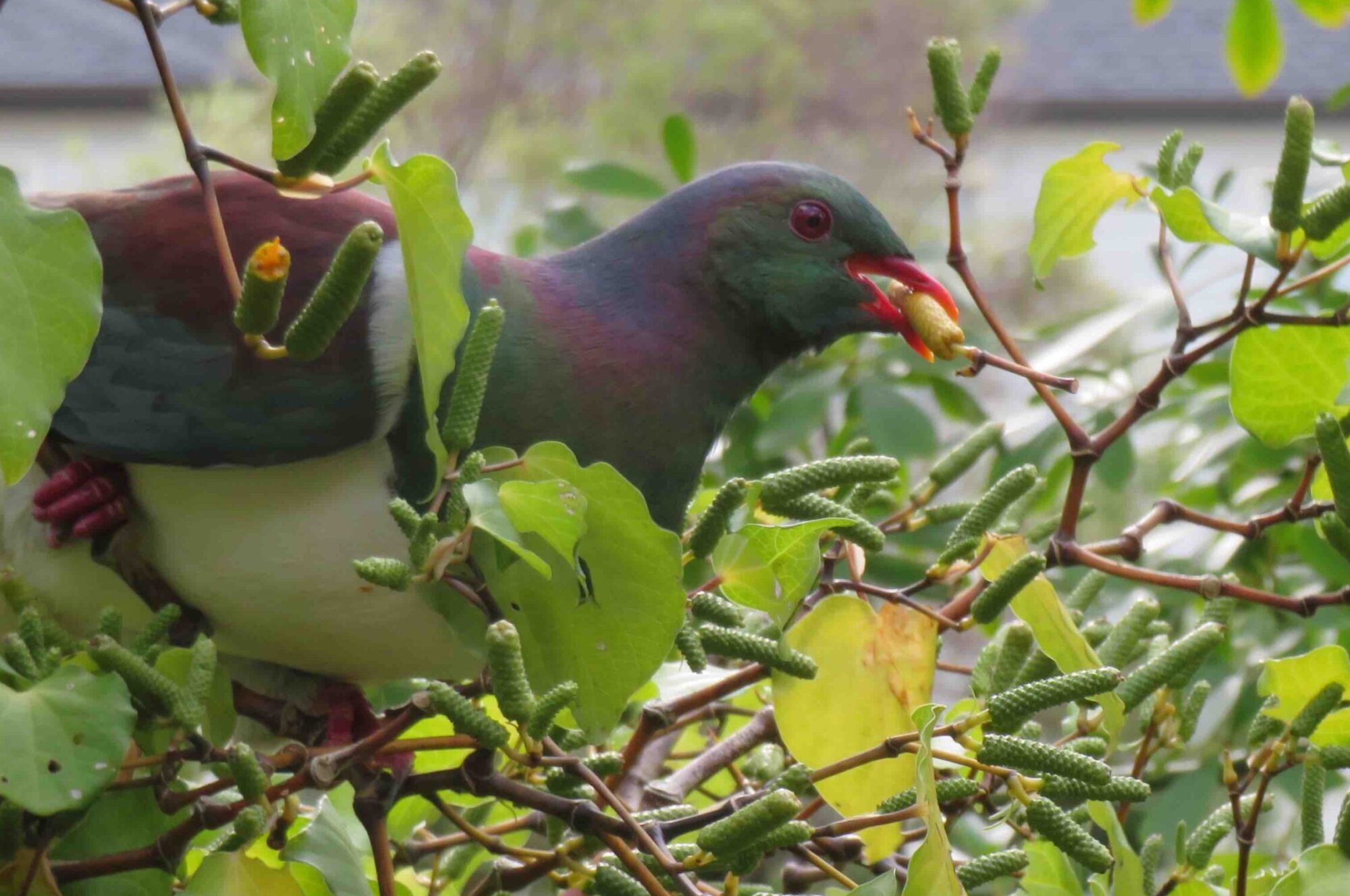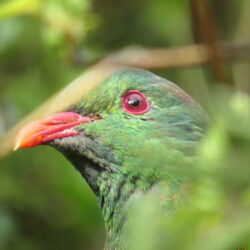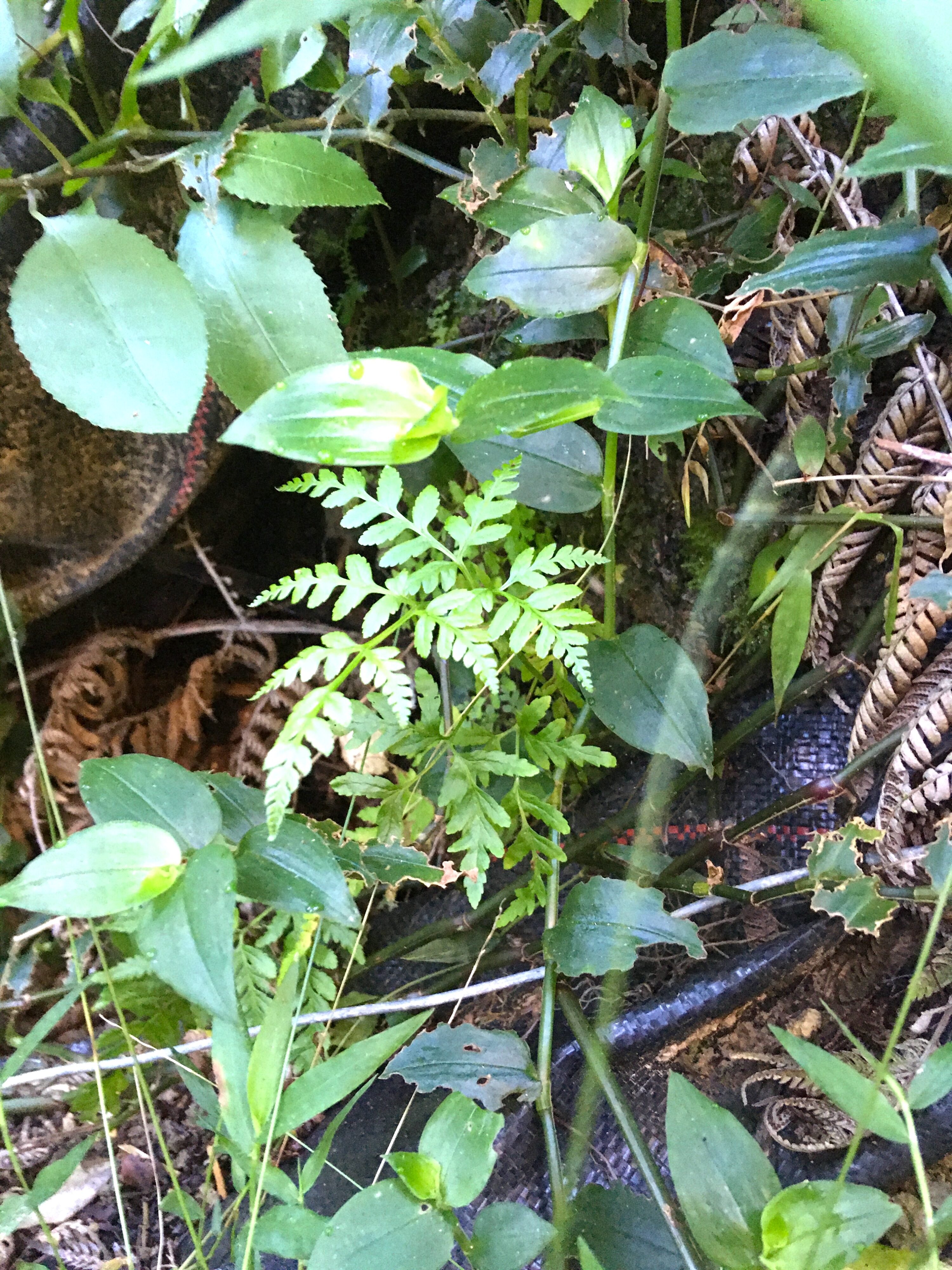
A native “Shaking brake” fern sporeling growing in Tradescantia
Almost every gardener knows Tradescantia ( Tradescantia fluminensis, aka Wandering Willie, etc). And many of them see it as a curse.
However, seedlings released from Tradescantia by careful handweeding usually include both natives and invasives, and they flourish in the humus created by decomposing Tradescantia.
The mahoe, toatoa, ti kouka, karamu and karo seedlings in the photos below are just a few of the thousands of native seedlings and sporelings we have found while handweeding Tradescantia in the Kaipatiki suburban area.
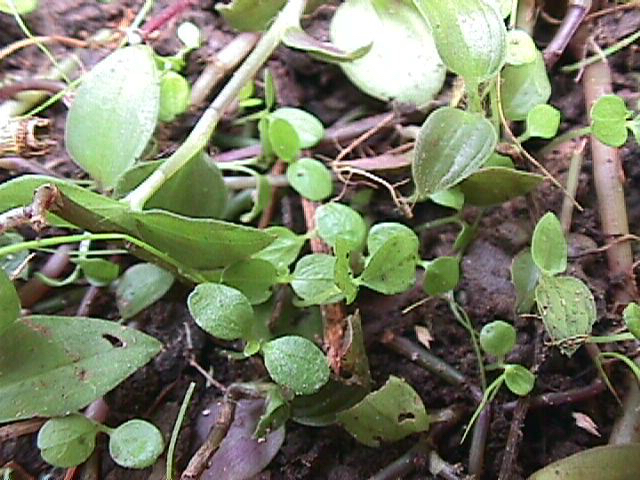
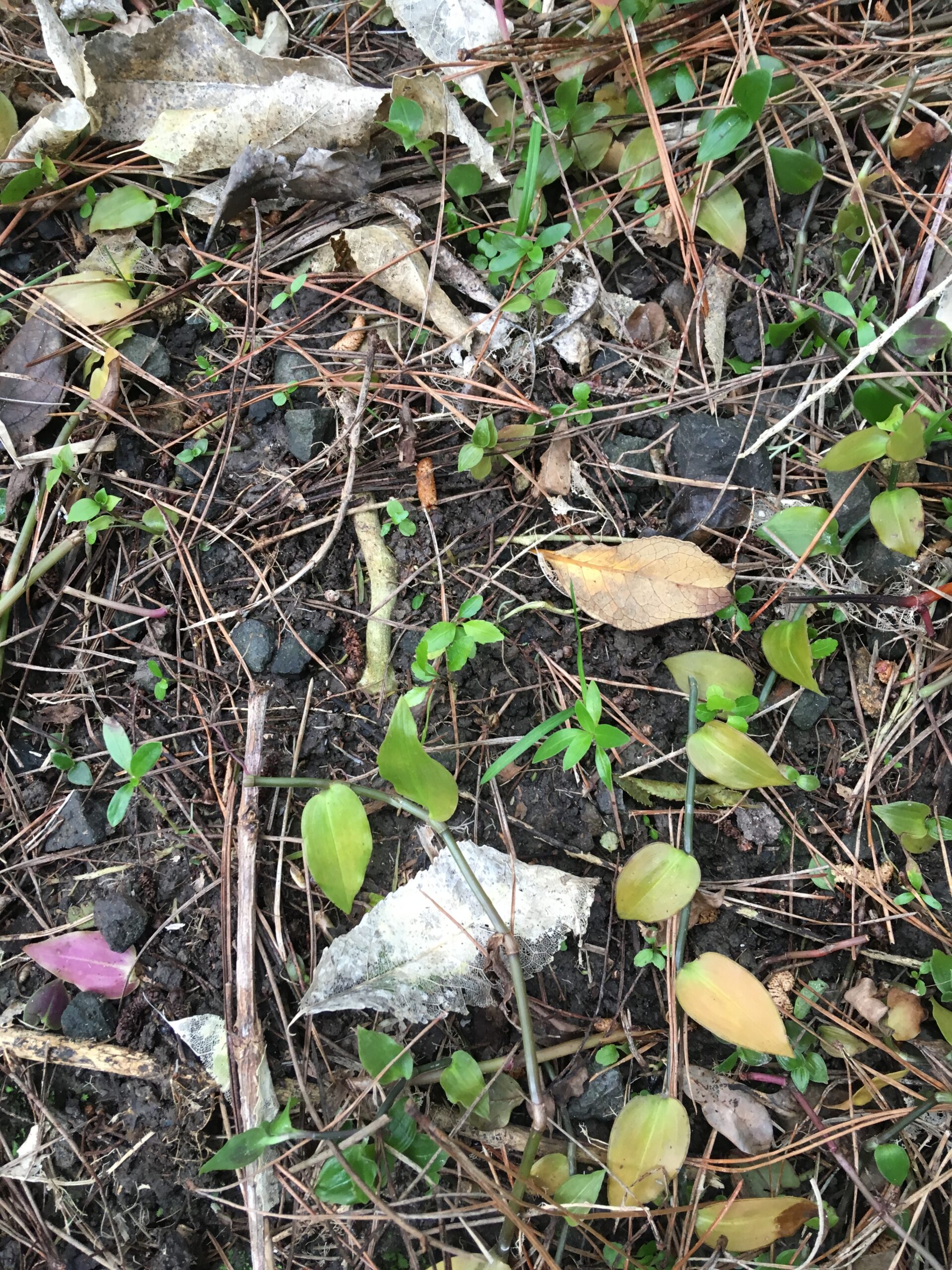

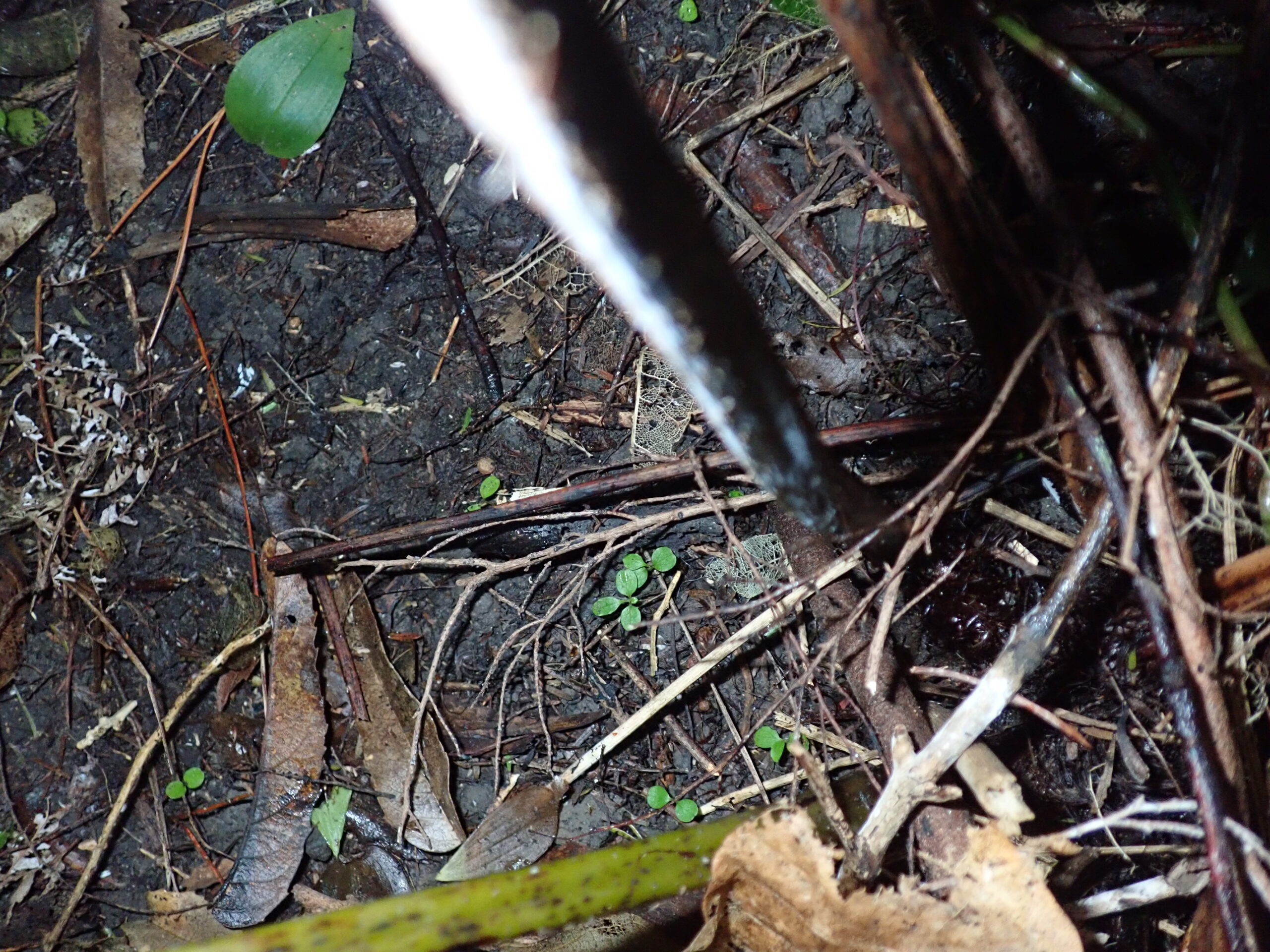

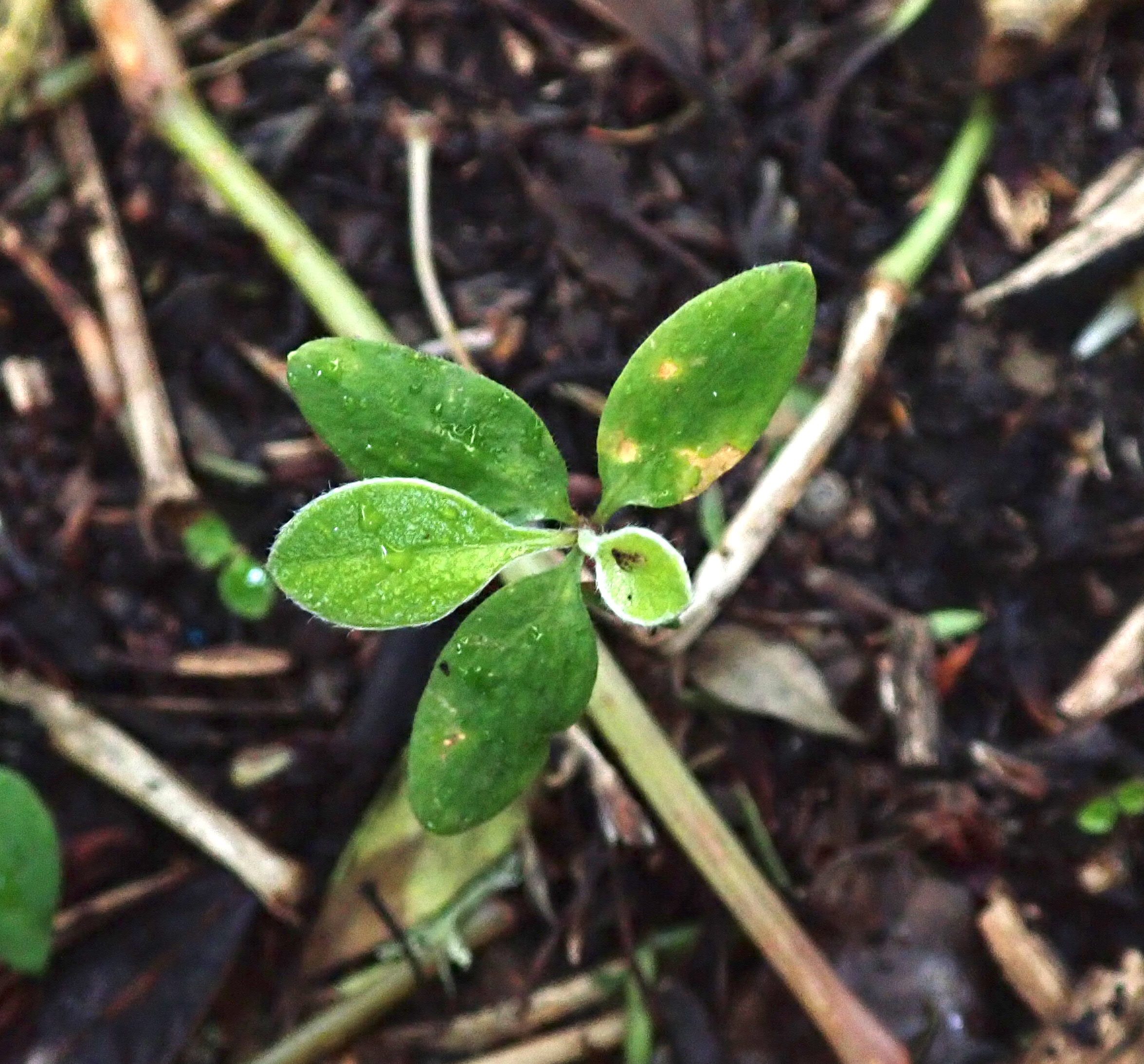
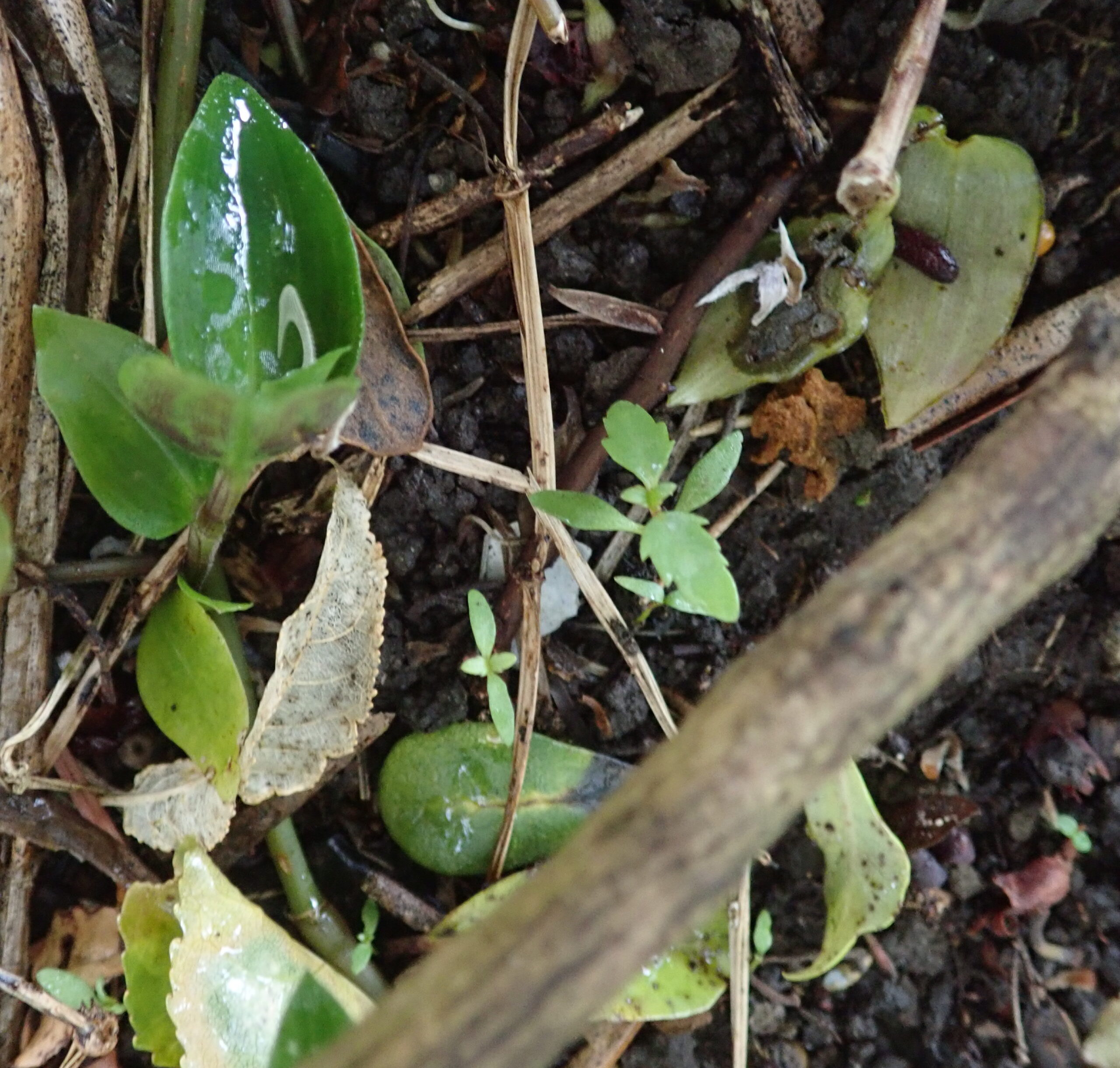
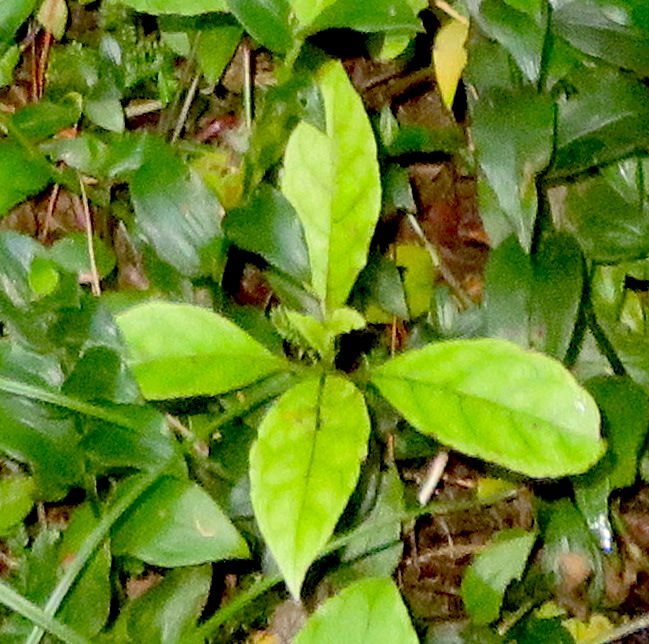
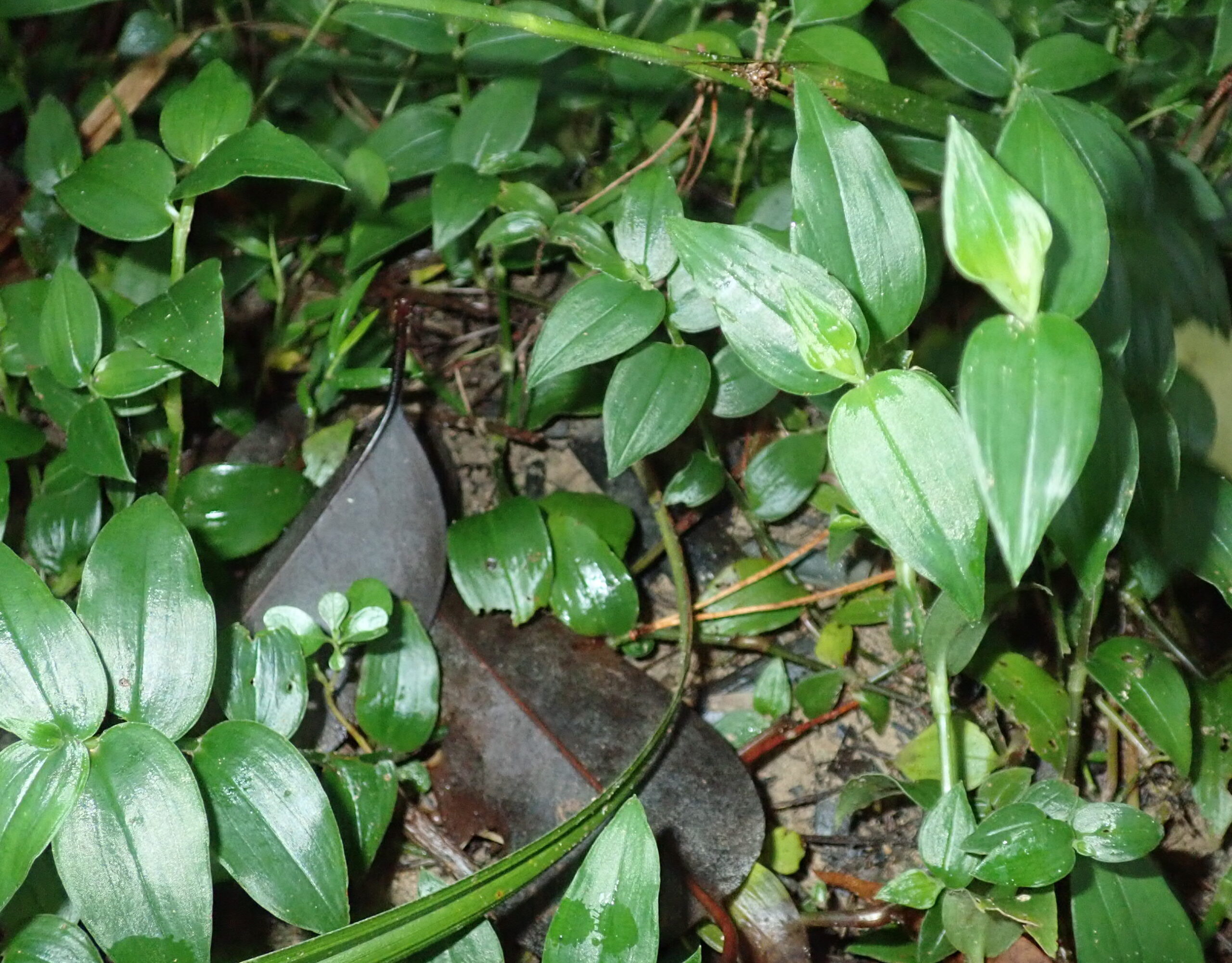

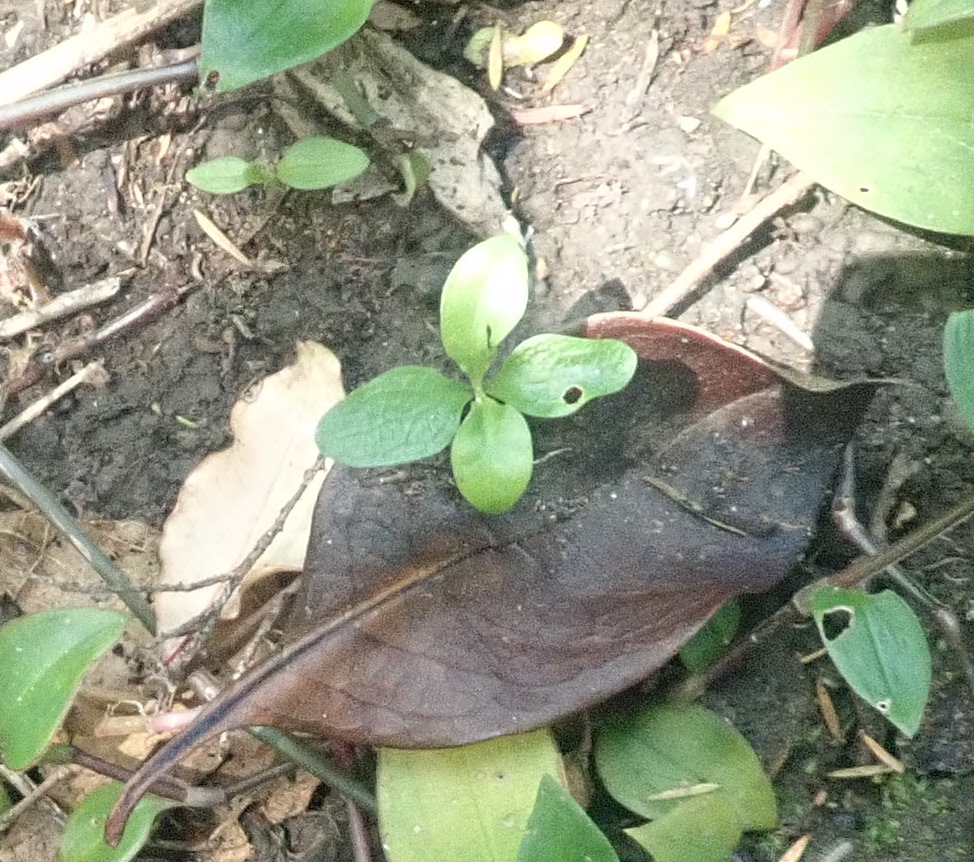
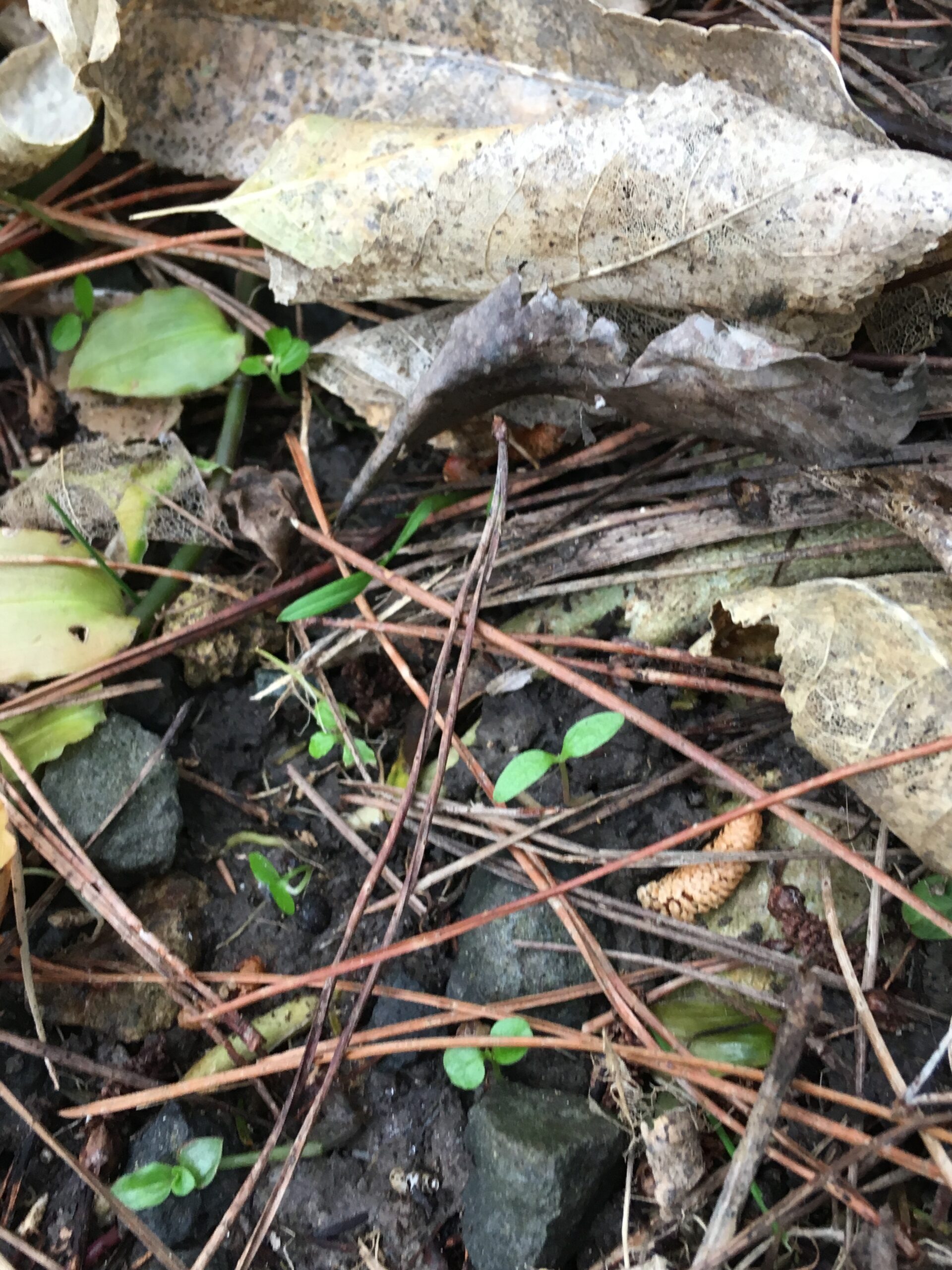
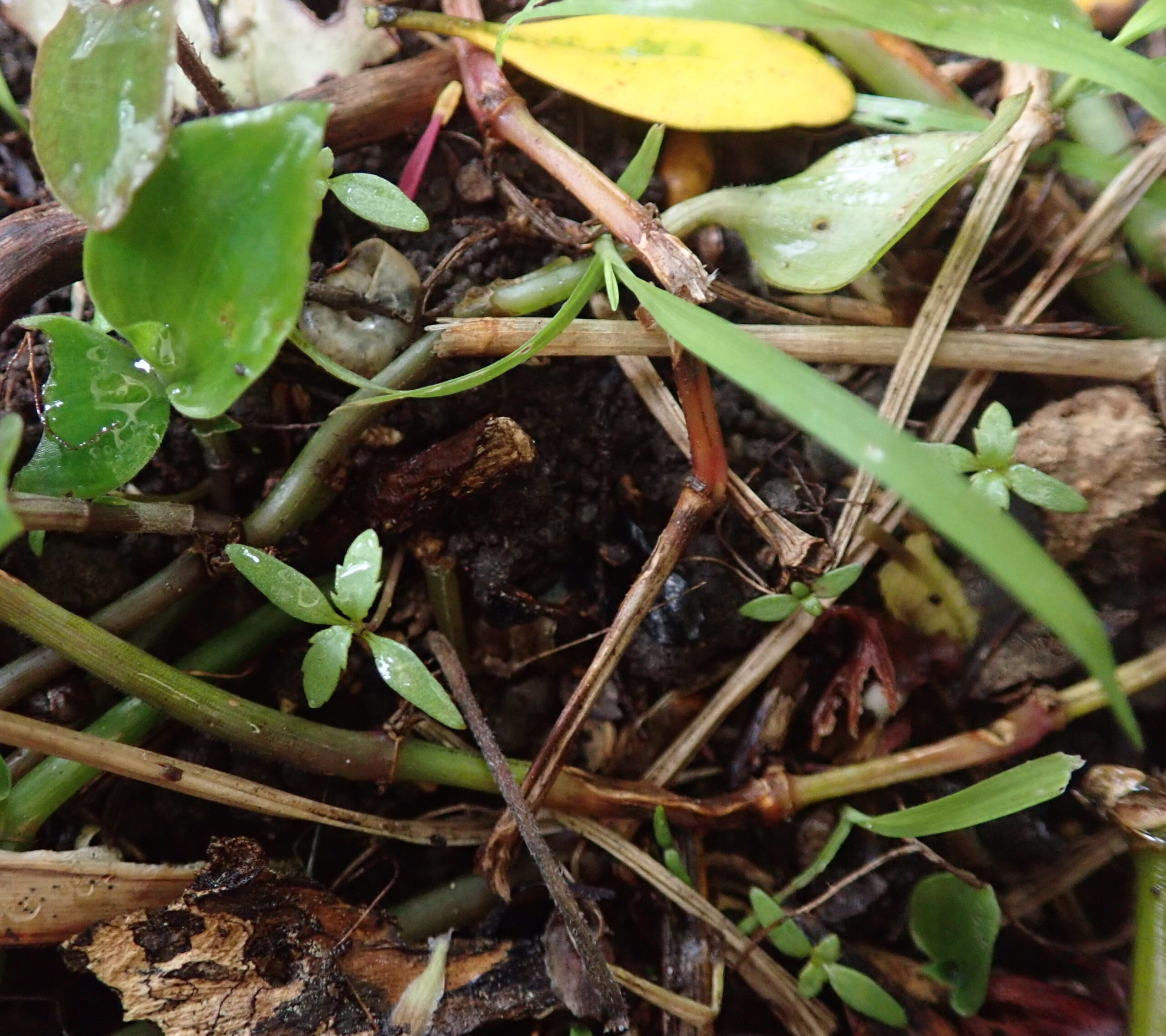


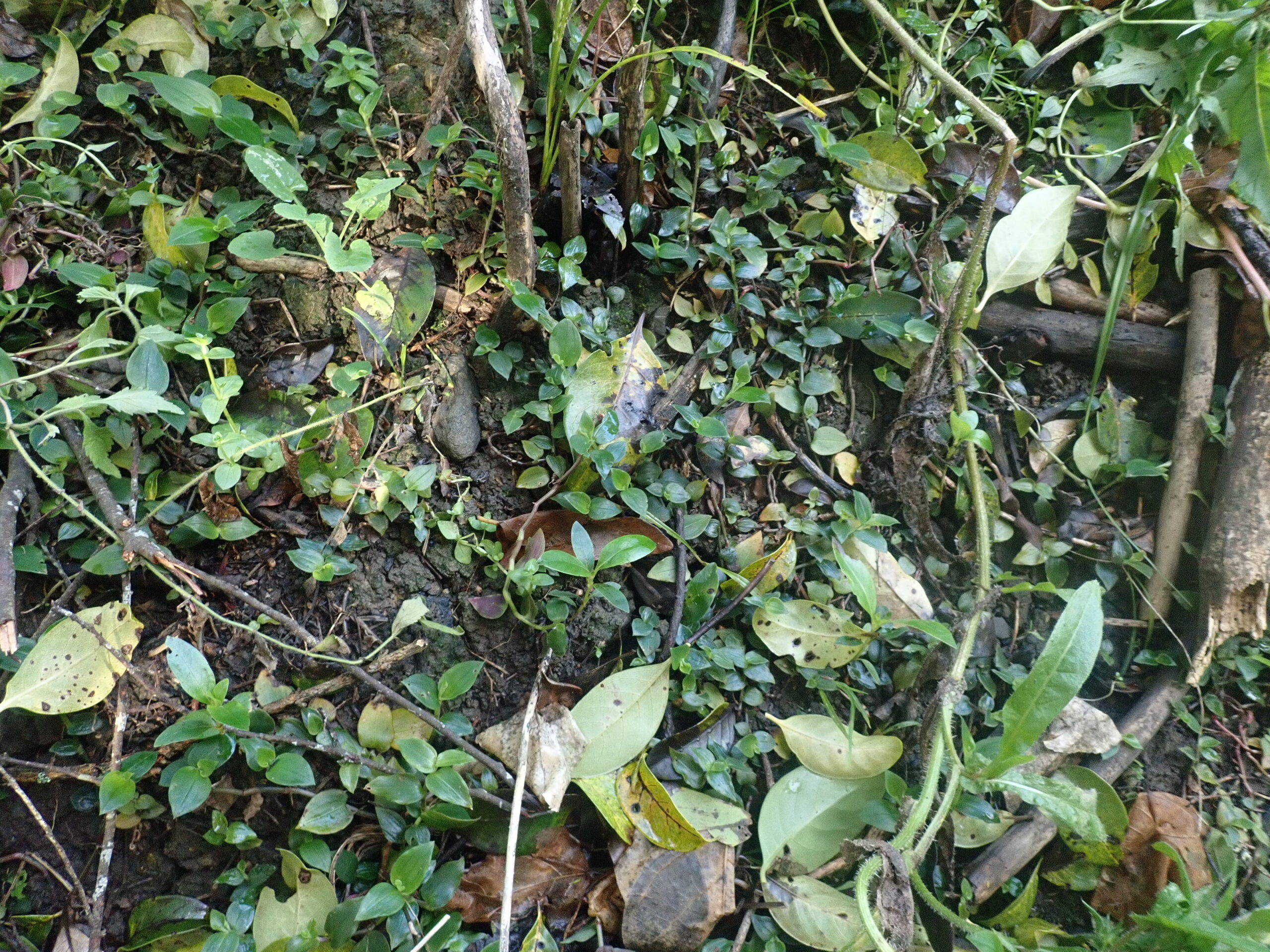


It is true that Tradescantia is relentless – though slow – in its growth, covering vast areas if unchecked, suppressing the natural regeneration of diverse native plants in wild habitats.
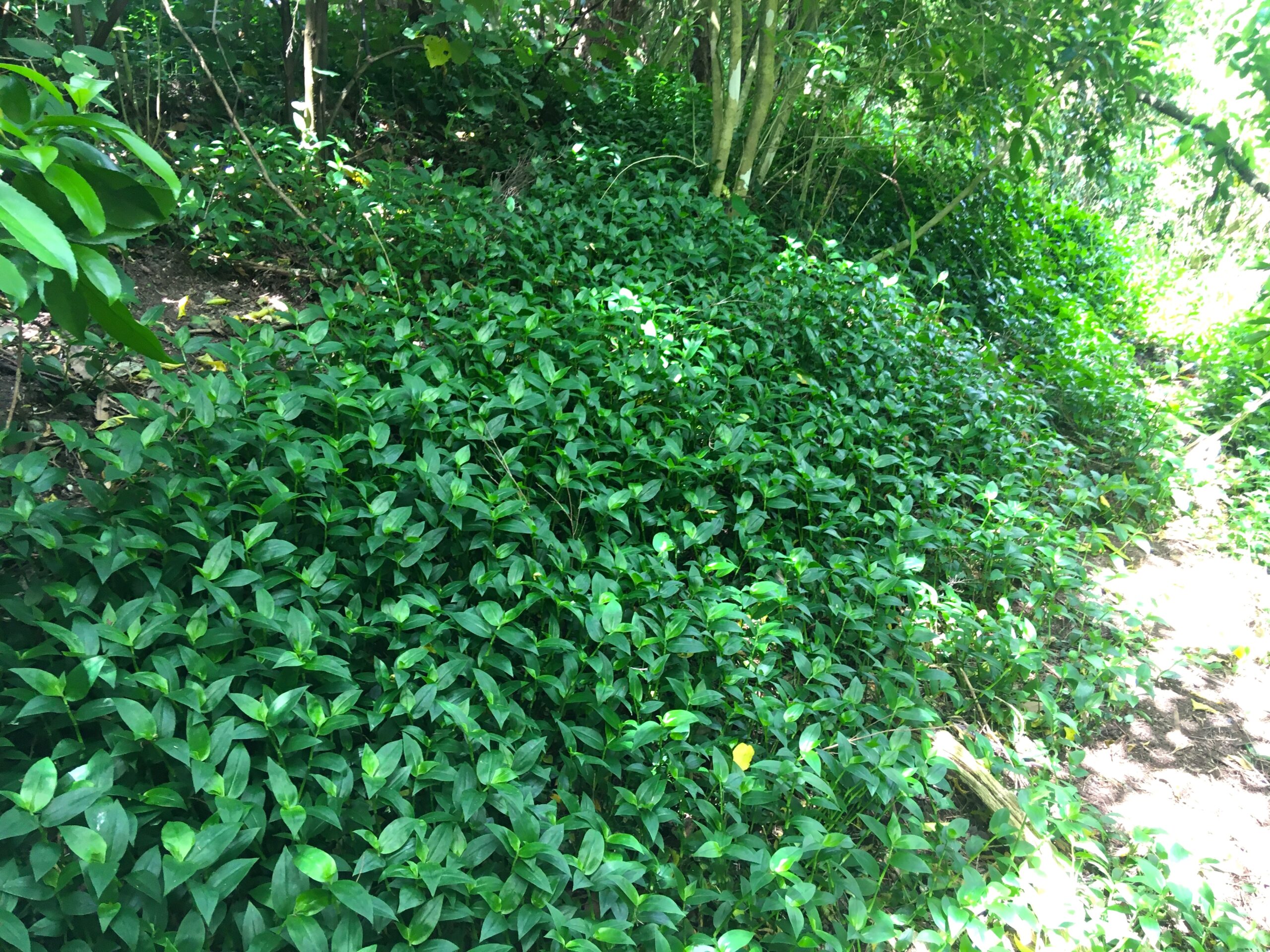
It is also true that it takes strategy and care to remove it completely and compost it to its extinction.


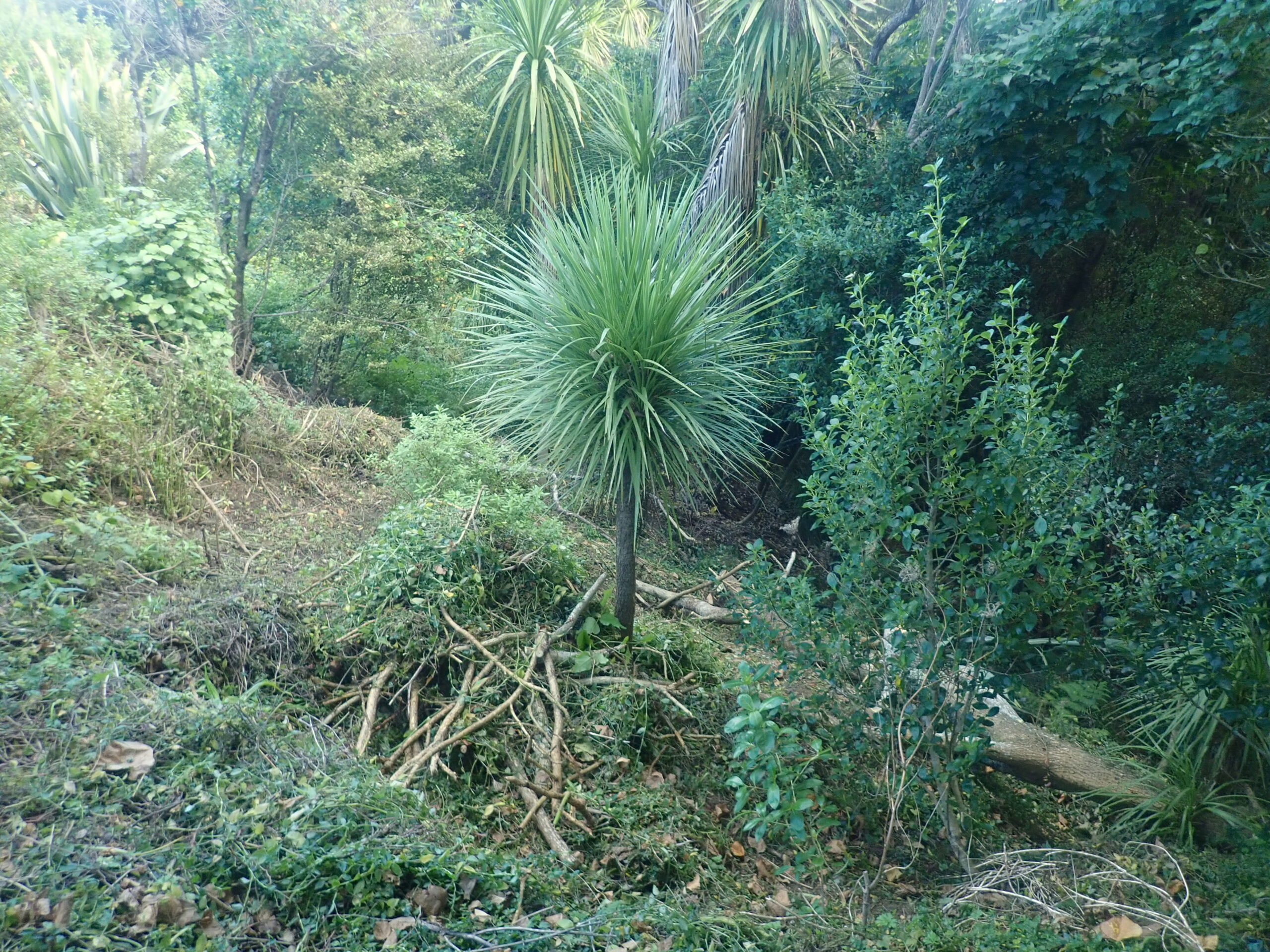
Above: Dense Tradescantia handgathered into piles for decomposition in place. Handweeding was begun furthest in the background, where the Tradescantia has been replaced by native regeneration 1-2 metres high.
Newly-piled Tradescantia around the cabbage tree is still green, while work has just begun on the area in the foreground.
Both before and after handweeding, Tradescantia’s leaves build up a loose humus-rich soil, and as a moisture-retaining ground cover it nurses seedlings and sporelings, which flourish if they are released to light at an appropriate time, and provided the soil is not allowed to dry out.
The humus and seedlings together provide for perfect regeneration of a native habitat if the Tradescantia is controlled methodically and carefully to its final eradication from an area, which can take a year or two as hidden stems emerge.
Below, June 2020: young toatoa (Haloragis erecta) seedlings, among the remnants and regrowth of Tradescantia after handweeding.
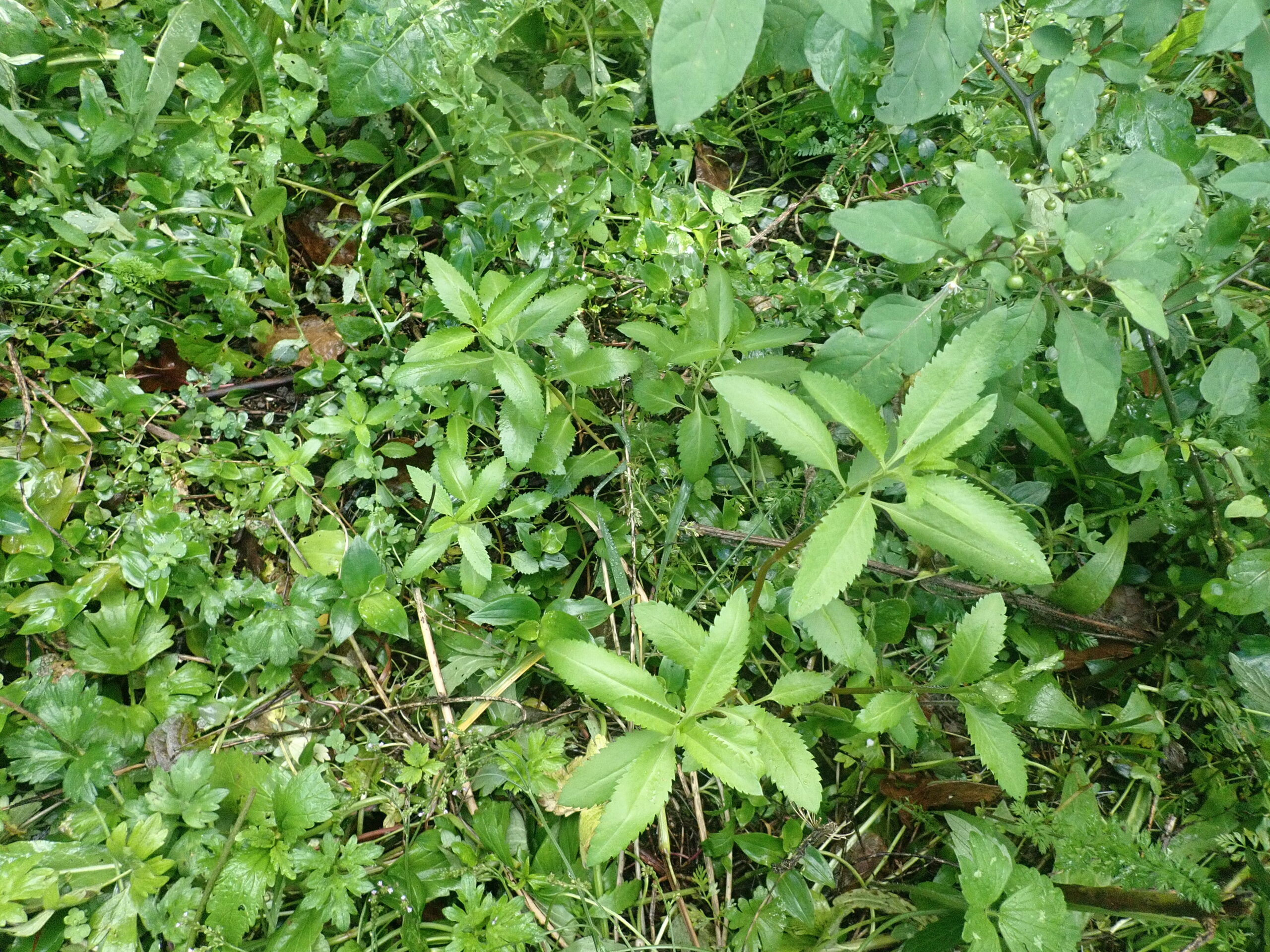
Many of these toatoa grew to a metre high here, helping revegetate a bank left bare by the removal of honeysuckle and dense Tradescantia.
Below, April 2021: The same bank, the toatoa on the right in foreground and midground. The young karamu, mahoe and ti kouka trees survived prolonged drought , sheltered and shaded by the shrubby toatoa that emerged spontaneously after handweeding of a major weed invasion which was followed by Tradescantia.
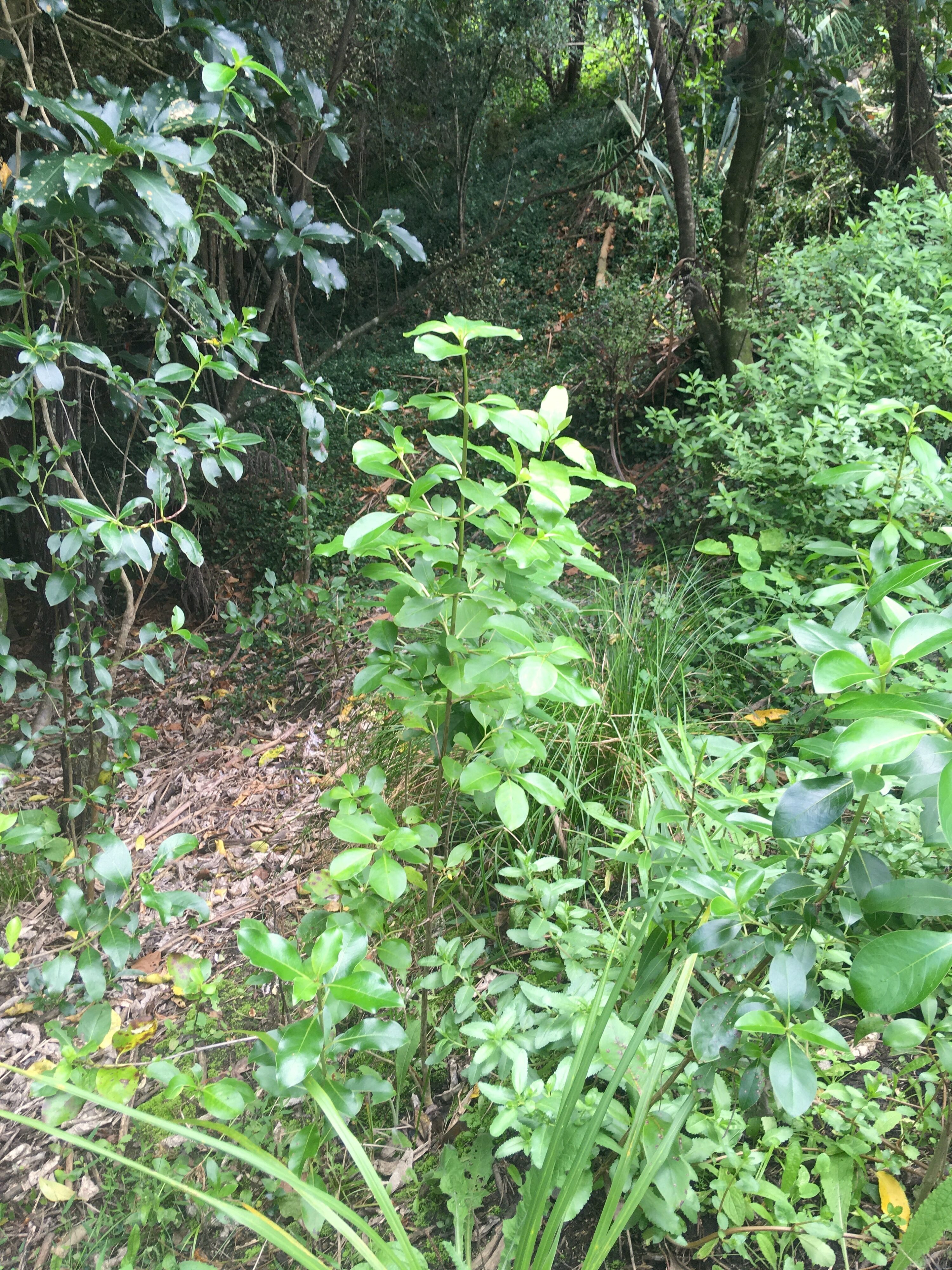
The image comparison below shows the same area during Tradescantia control in the foreground, as far as the tall ti kouka centre background. (The area beyond was left covered in Tradescantia for a few more years to avoid dessication and weed invasions more difficult to control, such as Creeping buttercup and Paspalum).


Drawing on our experience and photo records of handweeding for ecological restoration, we look forward to illustrating more examples as time permits.
In the meantime, you can see a description of our general methodology here.
